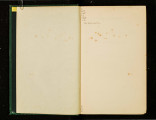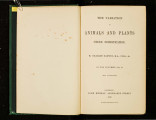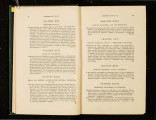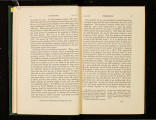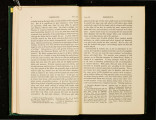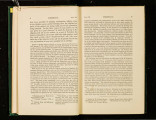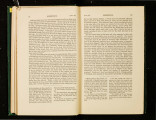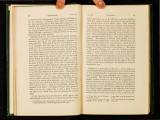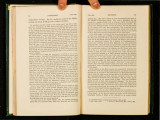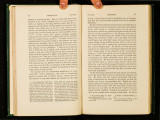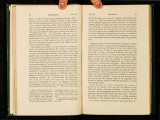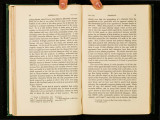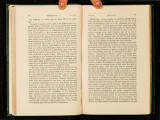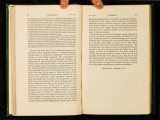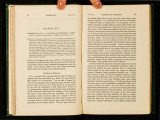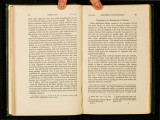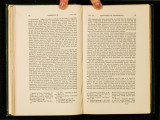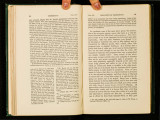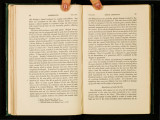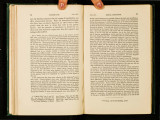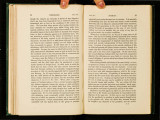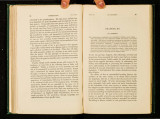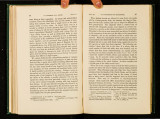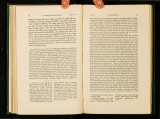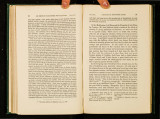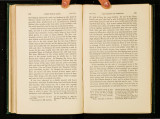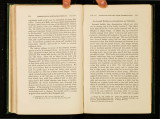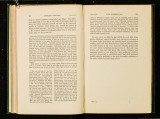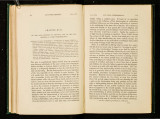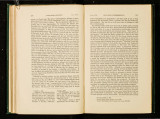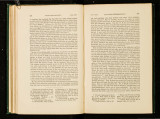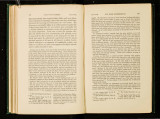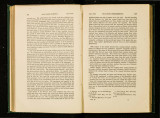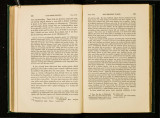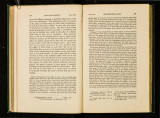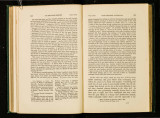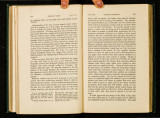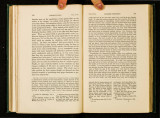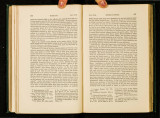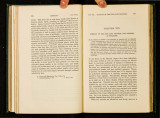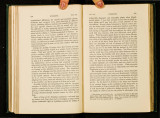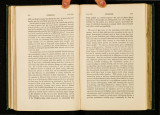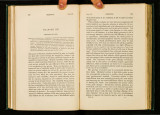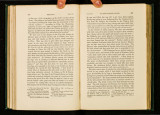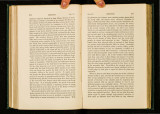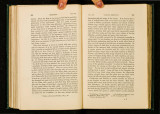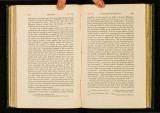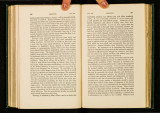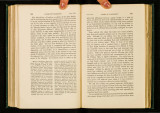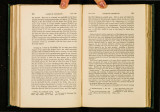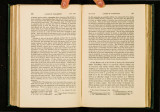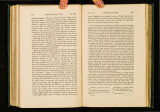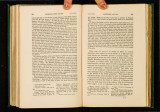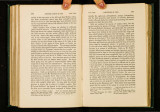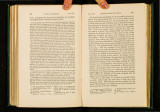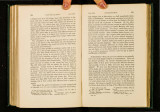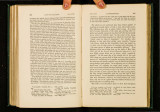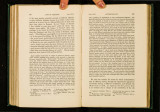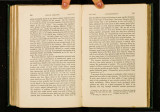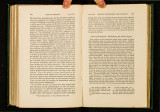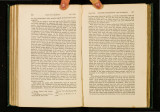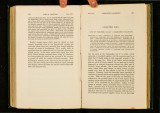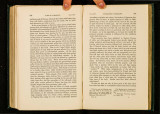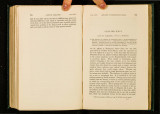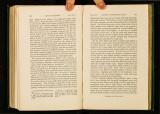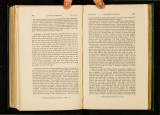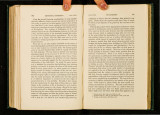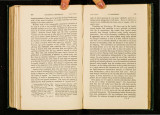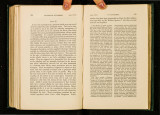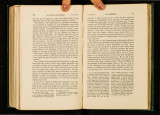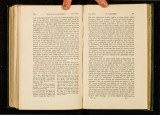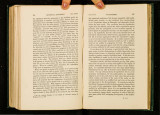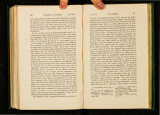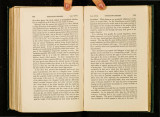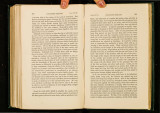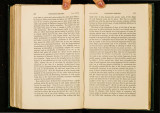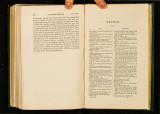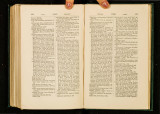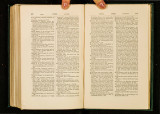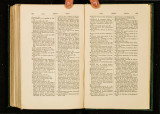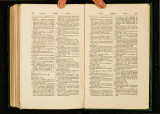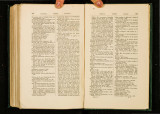| OCR Text |
Show ' .I 92 ON CERTAIN CHARACTERS CI!AP. XV. which do not now intercross, either would do so under different conditions, or that they formerly fertilised each other at in~ervals -the means for effectinO' this being generally still retamedand they will do so agai~ at some future period, un~ess i~deed they become extinct. On this view alone, many pomts m t?e structure and action of the reproductive organs in hermaphrodite plants and animals are intelligible,-for instance, the male and female organs never being so completely enclosed as to render access from without impossible. Hence we may conclude that the most important of all the means for giving uniformity to the individuals of the same species, namely, the capacity of occasionally intercrossing, is present, or has been formerly present, with all organic beings. On certain Characters not blending.-When two breeds are crossed their characters usually become :intimately fused together; but some characters mfuse to blend and are transmitted :in an unmodified state either from both parents o; from one. When grey and white mice are paired, the young are not piebald nor of an :intermediate t:int, but are pure white or oftheord:inary grey colour: so it is when white and common collared turtledoves are paired. In breed:ing Game fowls, a great authority, Mr. J. Douglas, remarks, u I may here state a strange fact : if you cross a black with a white game, you got birds of both breeds of the clearest colour." Sir R. Heron crossed dur:ing many years white, black, brown, and fawn.coloured Angora rabbits, and never once got those colours mingled :in the same animal, but often all four colours in the same litter .17 Additional cases could be given, but this form of inheritance is very far from universal even with respect to tho most distinct colours. When turnspit dogs and ancon sheep, both of which have dwarfed limbs, are crossed with common breeds, the offspring are not :intermediate :in structure, but take after either parent. When tailless or hornless animals arc crossed with perfect animals, it frequently, but by no means :invariably, happens that the offspring are 17 Extract of a letter from Sir R. Heron, 1838, given me by Mr. Yarrell. With respect to mice, see 'Annal. des Sc. Nat.,' tom. i. p. 180; and I have heard of other similar cases. For turtle-doves, Boitnrd and Oor1ie, 'Les Pigeons,' &c., p. 238. FortheGamefowl, ' 'fhe Poultry Book,' 1860, p. 128. For crosses of tailless fowls, see Bechstein, 'Naturges. Deutsch.' b. iii. s. 403. Bronn, ' Geschichte dcr Natur,' b. ii. s. 170, gives analogous facts with horses. On the hairless condition of crossed South American dogs, see Rengger, ' Saugcthiere von Paraguay,' s. 152 : but I saw in the Zoological Gardens mongrels, from a similar cross, which were hairless, quito hairy, or hairy in patches, that is, piebald with hair. For crosses of Dorking and other fowls, see 'Poultry Chronicle,' vol. ii. p. 355. About tho crossed pigs, extract of letter from Sir R. Heron to l\ir. Yarrcll. For other cases, see P. Lucas, ' Hercu. Nat.,' tom. i. p. 212. CHAP. XV. NOT BLENDING. 93 either perfectly furnished with"these organs or are quite destitute of them. According to Rongger, the hairless condition of the Paraguay dog is either perfeqtly or not at all transmitted to its mongrel offspring ; but I have seen on? partial exception in a clog of this parenk'tge which had part of its sk:in ha::ry, and part naked; the parts be:ing dist:inctly separated as in a piebald ammal. When Dorking fowls with five toes are crossed with other breeds the chickens often have five toes on one foot and four on the other. Som~ crossed pigs raised by Sir R Heron between the solid-hoofed and common pig had not all four feet in ~n intermediate condition but two feet were furnished with properly divided, and two with united hoofs. Analogous facts have been observed with plants: Major Trevor Clarke Cl'Ossod tho little, glabrous-leaved, annual stock (Mcttthiola), with pollen of a laTge, red-flowered, rough-leaved, biennial stock, called cocardeau by tho French, and the result was that half the seedl:ings had glabrous and the other half rough leaves, but none had leaves in an :intermediate state. That the .glabrous seedl:ings were tho product of the rough-leaved variety, and not acCJdentally of the mother-plant's own pollen, was shown by their tall and strong habit of gTowth.18 In the succeed:ing generations raised fTOm the rough-leaved crossed seedl:ings, some glabrous plants appeared, show:ing th~t the glabrous character, though incapable of blend:ing with and modifymg the rough leaves, was all the time latent :in this family of plants. The numerous plants ~ormerly referred to, which I raised from reciprocal crosses bet':een the pelonc an~ common Antirrhinum, offer a nearly parallel case ; ~o1· ill the first gene1:atwn all the plants resembled the common form, and ill the next ?ener~twn, out. of one hundred and thirty-seven plants, two a~one wore m ~n. illtermediato condition, the others perfectly resembl:ing e1ther the pelonc or common form. Major Trevor Clarke also fertilised the above-mentioned red-flowered stock with pollen from the purple Queen ~tock, and about half the seedlings scarcely differed :in habit, and not at all ill the red colo~r of the flower, from the mother-plant, the other half bearing blossoms of a riCh purple, closely like those of the paternal plant. Gartner crossed many white and yellow-flowered species and varieties ofVerbascum · an~ these colours were never blended, but the offspr:ing bore either pur; white or pure ~ellow blossoms ; the former :in the larger proportion.1o Dr .. Herbert raised many seedlings, as he informed me, from Swedish turm1:s crosse~ by.two other varieties, and these never produced flowers of an mtermedmte tillt, but always like one of their parents. I fertilised the purple sweet-pe~ (Lathyr·us odoratus), which has a dark reddish-purple standard-petal and vwlet-coloured w:ings and keel, with pollen of the pa:intedlad! sw~et-pea, which has a pale cherry-coloured sii.'tndard, and almost whtte Willgs ~nd keel; and from the same pod I twice raised plants perfectly resemblillg both sorts; the greater number resembling the father. So perfect was the resemblance, that I should have thought there had 18 'Internat. Hort. and Bot. Congress of London,' 1866. 19 'Bastarderzeugung,' s. 307. Kolreuter (' Dritte Fortsetszung,' s. 34:, 39), however, obtn.incd intermediate tints from similar crosses in the genus V erbascum. With respect to the turnips, see Herbert's 'Amarylliclacere,' 1837, p. 370. |




